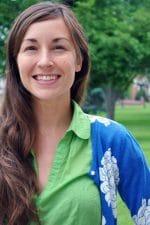Warm Greetings friends, just wanted to make a quick post here to explain why there are some missing episodes in this ongoing saga of science radio right here.
I have gotten quite a few emails wondering where Episode 1, Episode 36 and now Episode 43 are, and am now willing to reveal the secret behind these lost episodes...and the secret is...I am not very good with this whole technology thing...sigh...
So the very first Episode was all about the origins of the show, and the Colorado Plateau in general, and then I had on my very first guest who was none other than the legendary
Ed Kabotie, an
 |
| Ed Kabotie, Hopi/Tewa artist and musician. |
extraordinary artist and musician (front-man of
Tha Yoties) who spoke about his life growing up on the Plateau and on Hopi, about the importance of water and of community, about the
Rumble on the Mountain event that year, and he did a spectacular rendition of his song The River live in the studio (I even had to sit on the ground holding a microphone to his guitar). Anyway, I was so excited to do my first live show, and to be talking with Ed, that I completely forgot to record it. So it was lost forever, into the airwaves and into space, and I began bringing a little placard into the studio with me after that that simply said 'Hit Record You Idiot!'. Ed and I finally did another episode together (Episode 34) and we have one planned for the fall titled 'The Alternative History of the Americas' so stay tuned for that one!
And that little placard helped me have a great run...until Episode 36.
 |
| Members of one of the epic Grand Canyon Youth trips. |
Episode 36 was all about the Colorado River and I was trying to take listeners on a journey from the headwaters of the Colorado River beginning at La Poudre Pass in the Southern Rocky Mountains of Colorado, at just under 2 miles above sea level, and eventually hitting the sea at the Gulf of California 1, 450 miles later. I encouraged listeners to get out a map and follow along and talked about places like Blackrocks where the river is nearly 100 feet deep, and the Kawuneeche Valley and Ruby Canyon and of course Cataract and the Grand Canyon. And the guest was none other than Tory Syracuse the Development and Communications Director for
Grand Canyon Youth, a Flagstaff nonprofit that provides expeditions on the rivers of the Southwest to youth from all backgrounds. It was an amazing interview and very emotional as well, and even though I did hit record, the thumb-drive I was recording to failed and once again a beautiful episode was lost to all but those who tuned in live. But not to worry! Tory and I devised another show for the future where I will interview some of the kids who learned so much from the river and through the tireless efforts of Grand Canyon Youth.
Finally we get to the lost Episode 43...an episode devoted to bird watching on the Plateau. There was no guest this time around, just a fun journey on interesting bird species of the Plateau, riparian habitat and special place of note, as well as the joys and amazing benefits that one gets from bird watching. It was a simple show, a happy show, and a doomed show. I deleted the only file of the recording during a computer cleanup, and that show is lost forever.
 |
Your humble host, Christopher Calvo (bottom left) with dear
friends from a Birding Club outing in FLagstaff, AZ. |
So here is to that never happening again, and to another long run of no technical difficulties (I hope). Thanks so much for all the emails and for continuing to tune into this homemade science show, friends.
- Christopher Calvo


























